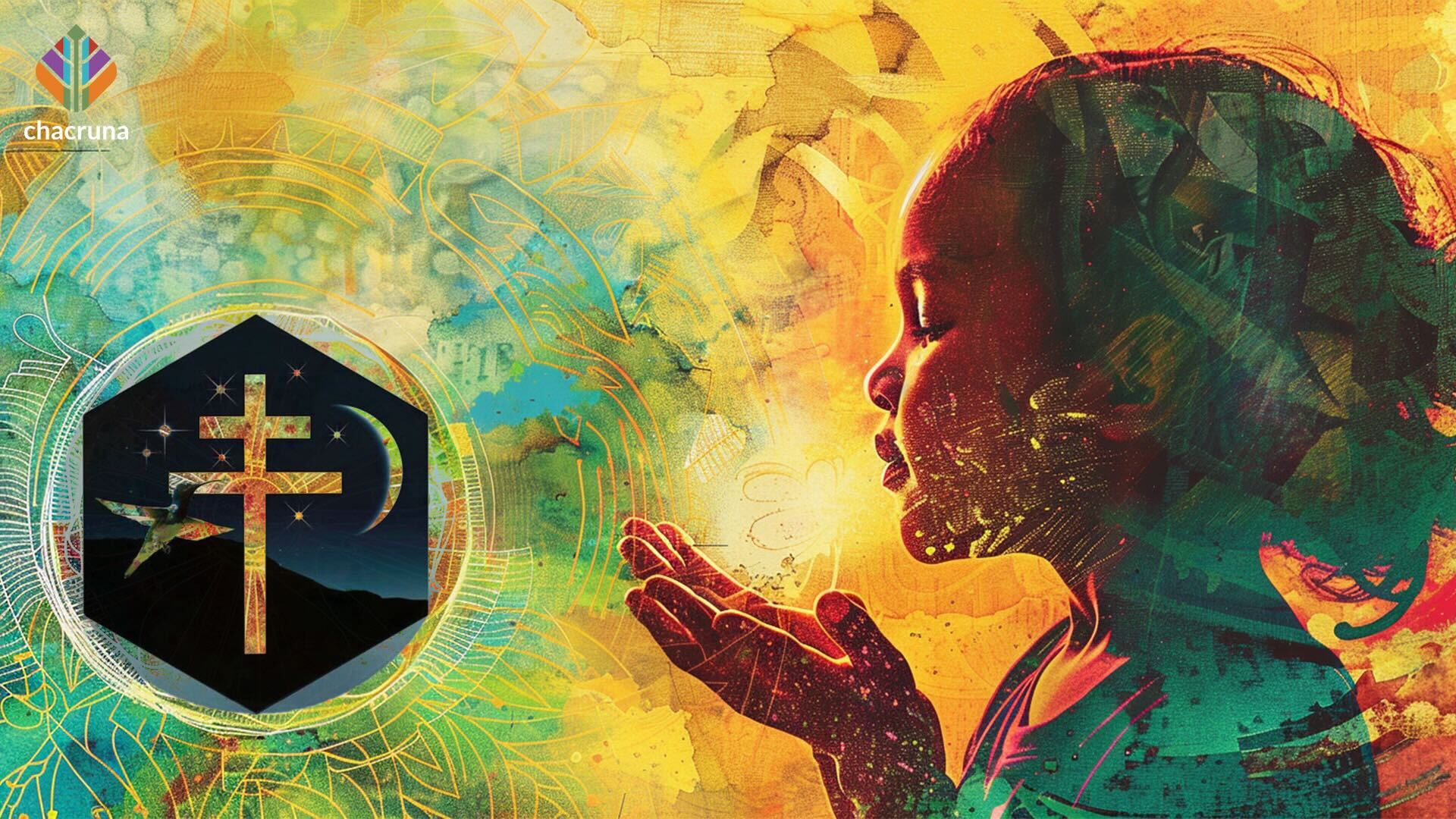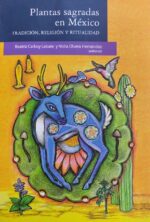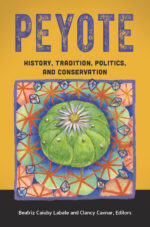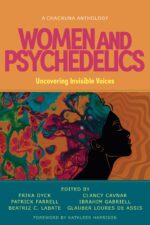- Santo Daime and Its Impact on Child Development - September 11, 2024
The psychedelic renaissance has arrived in the US with the legalization of some types of psychedelics in a number of states. Despite this growing acceptance, we still do not know the extent of psychedelic medicine’s effect on children’s physical and mental development, including on breastfeeding infants.
The Santo Daime tradition stood out to me in terms of childhood development. As a psychologist in Brazil with experience in child development, I was intrigued by how Daime kids were so well advanced in their cognitive and motor skills. Would you expect a constant rhythm tempo from a kid between 1-2 years old? I would not, but I saw it happening.
Santo Daime and the Use of Ayahuasca by Minors: A Brief Overview
Santo Daime, a syncretic religion founded by Raimundo Irineu Serra in Brazil, incorporates a sacrament called Daime, mirroring ayahuasca, as a central element of its spiritual practice rooted in Christ’s consciousness. According to the National Anti-Drug Secretariat of Brazil (CONAD [National Council on Policies about Drugs], 2010), the use of ayahuasca, the primary component of Daime, by minors and pregnant women is left to the discretion of parents or legal guardians. In the absence of conclusive scientific evidence indicating harmful effects, the emphasis is on the responsible exercise of parental rights, ensuring the well-being of both the developing child and the unborn.
Within Santo Daime sessions, children are not mere spectators but active participants, learning values in what resembles a spiritual school. Dosing for children is tailored, starting with drops for infants and increasing gradually (Oliveira, 2015). Remarkably, the autonomy of older children to decide their level of participation underscores the community’s respect for individual agency. Daime is seen as a form of spiritual education (Labate, 2011).
Pregnancy and Daime
In Santo Daime, women have the autonomy to decide whether to consume Daime during pregnancy and childbirth. Smaller doses are typically administered to pregnant women and children.
In Santo Daime, women have the autonomy to decide whether to consume Daime during pregnancy and childbirth.
As reported in some studies, the benefits of psychedelics, including Daime for postpartum depression, are shown to be a better and safer alternative to antidepressants (Malcolm, 2023).
Anthropologic use reports in pregnancy and observational studies of exposed adolescents show no deficits. While Daime may transfer to breast milk, a lack of studies that examine the teratogenic effects emphasizes the need for careful consideration (Assis & Rodrigues, 2022; Labate, 2011; Malcolm, 2023).
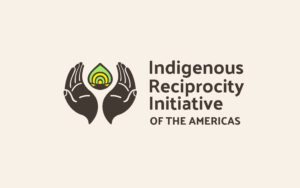
Discover the Indigenous Reciprocity Initiative of the Americas
Inclusion of Women and Children in Spiritual Ceremonies: A Cultural Perspective
The inclusion of children and pregnant women in Santo Daime ceremonies has sparked a debate. Some argue that it fosters inclusivity and spiritual connection from an early age, while others express concerns about potential risks to the child’s well-being.
Proponents of including children believe it promotes a sense of community and shared spiritual experiences within families. They believe exposing children to Daime in a controlled environment can foster open-mindedness, empathy, and a deeper connection to nature.
Critics, however, worry about the potential impact of psychedelics on the developing nervous system and the lack of conclusive evidence regarding their safety for children. They emphasize prioritizing children’s well-being and ensuring their informed consent before participating.
Considering the inclusion of children and pregnant women in psychedelic ceremonies raises thought-provoking questions. Excluding and limiting women and, consequently, children from spiritual engagement could reinforce patriarchy and traditional gender roles. Additionally, Indigenous communities seamlessly incorporate breastfeeding into ceremonies involving psychoactive substances, adding cultural context (Assis & Rodrigues,2022).
Santo Daime and Childbirth
The book Santo Daime Cultura Amazônica – História de Juramidam [Santo Daime, Amazonic Culture, Juramidam’s History] by Froes (2019) provides a detailed narrative of the mother’s experience during childbirth under the influence of Daime. Additionally, personal accounts, such as the one shared by Andreozzi (cited by Labate, 2011), also offer insights:
“I took Daime during all my pregnancies and during childbirth. All of the births were normal, without complications. Daime gave me a full consciousness about my body and what was happening during such a special moment as childbirth. I was able to relax and experience the births in a very beautiful and positive manner.”
Some women describe it as facilitating relaxation, maintaining contractions, and enhancing the overall experience. Santo Daime ceremonies reveal awe-inspiring moments of young children engaging in spiritual hymns, indicating a profound connection to ceremonial elements.
As discussions swirl around the inclusion of pregnant women, the delicate balance between cultural traditions and contemporary health knowledge emerges. Pregnant women, in moderation, engage with Daime to forge a deep spiritual bond with their unborn children.
Within this spiritual context, transformative possibilities during childbirth are unveiled, emphasizing the sacrament’s potential in enriching significant life events (Oliveira, 2015).
A Glimpse into Advanced Child Development in Santo Daime
According to the stages of child development outlined by Donald Winnicott, a child aged 1.5 to 3 years experiences the Essential Antagonism stage, marked by a burgeoning sense of separateness and individuality. They are beginning to explore their independence and assert their own will.
In Freudian terms, this period aligns with the Anal Stage, emphasizing pleasure and control through bowel and bladder elimination. This can sometimes lead to tantrums or power struggles with caregivers due to their attempt to control (Santrock, 2011).
Santo Daime communities provide fascinating insights into the advanced development of children at this age. During a retreat, I witnessed a scene where a three-year-old boy exhibited impressive independence. Navigating his environment confidently, he autonomously poured himself a mug of milk on his tiptoes, as the table was too tall for his size, showcasing fine motor skills and a sense of self-sufficiency. As per Freud’s stage, at this age, this boy would be in the Anal Stage, trying to control the environment to his will; as per Winnicott, he would be in the Essential Antagonism stage, marked by a sense of separateness and individuality. Both stages fit well into the scenario I witnessed; however, it is still very mature in a 3-year-old boy.
Some of the Santo Daime kids I know speak about 2-3 languages fluently at a very young age, challenging conventional expectations related to developmental milestones. I do recognize that exposure to various elements is crucial for a child’s development. However, it is interesting to see how diverse and skilled these young children are in this context, which is much more advanced than in other environments I have experienced.
Another notable situation I witnessed was in the Santo Daime ceremony in Acre, Brazil, where a one-year-old boy adeptly pushed the hymn with a maraca in perfect tempo. This showcased a level of motor skills well above the average for his age.
Even with these extraordinary observations, a compelling question arises: Could Daime propel these children toward accelerated intellectual and motor development?
Research of Santo Daime in Youth
While current psychedelic research predominantly focuses on adults, the impact on children, with their heightened capacity for learning and absorption, remains largely unexplored. Studies, such as the one conducted by Grob (2010) and cited by Labate (2011), reveal that adolescents exposed to ayahuasca in the context of the UDV (Union of the Vegetal) exhibited lower rates of substance use and anxiety, with no evidence of injurious effects. These findings underscore the need for comprehensive research into the potential impacts of psychedelics on young minds.
In alignment with this imperative for research, Lívea Pires Martins de Oliveira conducted a psychological evaluation in 2015 on children participating in the Santo Daime Doctrine in Vila Céu do Mapiá, Amazonas. The study revealed that these children present significant differences in self-concept (self-perception) and interpersonal relationships. Notably, the low values observed in indices such as the egocentrism index and responses of human content may result from the specific cultural interaction with high collective demands and a low sense of efficacy, intensified by a sense of duty and discipline.
This psychological study underscores the crucial importance of considering the unique environment in which these children live. The restricted social life, stemming from the secluded natural setting of Vila Céu do Mapiá, and the child-rearing practices aligned with collective societies in this rural religious community may significantly influence the psychological attributes identified in the research. Remarkably, the children are active participants in deciding whether to engage in Santo Daime ceremonies, highlighting an empowering aspect of their involvement. The interviews reveal a profound sense of discipline in these children, a solid connection to collective values, and a robust educational foundation within the community. The Santo Daime Doctrine is perceived as an educational platform, embodying a unique framework that mirrors the community’s cultural nuances and prioritizes collective values over individual ones (Oliveira, 2015).
Narratives from Santo Daime ceremonies also highlight the inclusion of children in spiritual practices, teaching them values of fraternity, justice, love, and peace. Children’s doses are carefully managed, increasing as they grow older, and their active participation in spiritual sessions is considered a form of spiritual education. These anecdotes challenge conventional expectations and call for a nuanced understanding of the interplay between psychedelics and child development (Oliveira, 2015).
Considerations and Potential Side Effects
As we marvel at developmental acceleration, it is crucial to consider potential side effects. Could frequent exposure of these kids at an early age lead to a reliance on psychedelics, potentially hindering full integration into material existence?
This question gains significance, especially considering the formative nature of childhood experiences. Kronman (2020) suggests that children unaccustomed to seeing adults in an altered state of consciousness could find it disturbing.
As we navigate this intricate terrain of psychedelics, childhood, and spiritual ceremonies, it becomes evident that a holistic exploration is necessary. The absence of peer-reviewed scientific research raises questions about the potential benefits and risks. Oliveira’s (2015) research indicates that children in Santo Daime demonstrate good psychological health, cooperative social behaviors, and adaptation to collective demands.
Conclusion
The intersection of psychedelics, breastfeeding, and child development unfolds as a multifaceted and intricate subject. The unique insights from Santo Daime ceremonies offer a distinctive perspective, hinting at potential developmental benefits.
Challenges and uncharted territories persist. The lack of peer-reviewed scientific research on the intersection of psychedelics and child development leaves crucial questions unanswered.’
As psychedelics gain recognition for therapeutic applications, deepening our understanding of their impacts on individuals at various life stages, particularly the very young, becomes crucial.
As psychedelics gain recognition for therapeutic applications, deepening our understanding of their impacts on individuals at various life stages, particularly the very young, becomes crucial.
Notably, Santo Daime practices, originating in the 1930s, have engaged Daimistas (Daime practitioners) for most of their lives. This presents a unique population for studying the consequences of long-term Daime usage on children’s and adults’ psychological development.
As the psychedelic renaissance gains momentum, the significance of delving into this subject intensifies. It becomes crucial to explore the enduring effects of psychedelics, specifically Santo Daime, on individuals’ lives.
Does a child become dependent on these mystical experiences to navigate daily life, or do such practices enhance their development and coping skills in the face of societal norms?
Unraveling these questions is essential for a comprehensive understanding of the long-term impacts of psychedelic practices within the Santo Daime tradition. By navigating it, we might glimpse what is yet to come from the Psychedelic Renaissance.
Art by Trey Brasher.
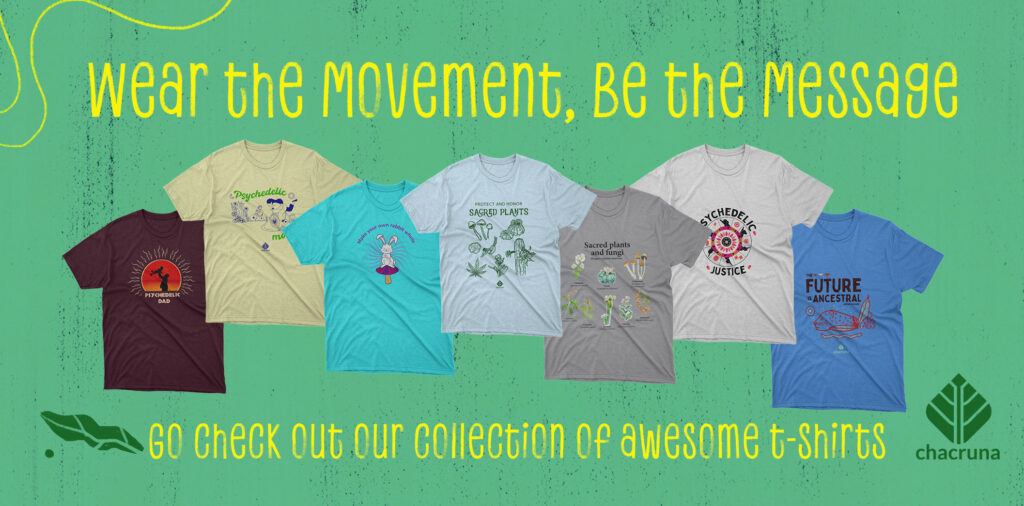
Shop our Collection of Psychedelic T-Shirts.
References
Assis, G. L. & Rodrigues, J. A. (2022, March 9). Ayahuasca and Childbirth in the Santo Daime Tradition: Solidarity Among Women and Psychedelic Cultural Resistance. Blog. Chacruna. https://chacruna.net/ayahuasca-and-childbirth-in-the-santo-daime-tradition/
Assis, H. M., & Rodrigues, E. (2022). Ayahuasca and the challenges of clinical research: A Brazilian perspective. The Journal of Clinical Psychiatry, 83(2), e04.
CONAD (2010). Resolução n.01. Available at: www.bialabate.net/wpcontent/uploads/2008/08/Resolução-Conad-_1_25_01_2010.pdf
Froes, V. (2019). Santo Daime Cultura Amôzonica – História de Juramidam [Santo Daime Culture of Amazon – History of Juramidam]. 3rd Edition. São Paulo.
Labate, B. (2011). “Consumption of Ayahuasca by Children and Pregnant Women: Medical Controversies and Religious Perspectives,” Journal of Psychoactive Drugs, 43: 1, 27–35. http://dx.doi.org/10.1080/02791072.2011.566498
Malcolm, B. (2023, Feb 21). Psychedelics, Pregnancy, and Breastfeeding. Blog. Spirit Pharmacist. https://www.spiritpharmacist.com/blog/pregnancynursing
Oliveira, L. P. M. D. (2015). Crianças que bailam na floresta: avaliação psicológica das crianças participantes da Doutrina do Santo Daime residentes na Vila Céu do Mapiá, Pauiní/AM (Doctoral dissertation, Universidade de São Paulo).
Santrock, J. W. (2011). Child development: A contemporary perspective. New York, NY: McGraw-Hill.
Take a minute to browse our stock:
Did you enjoy reading this article?
Please support Chacruna's work by donating to us. We are an independent organization and we offer free education and advocacy for psychedelic plant medicines. We are a team of dedicated volunteers!
Can you help Chacruna advance cultural understanding around these substances?


